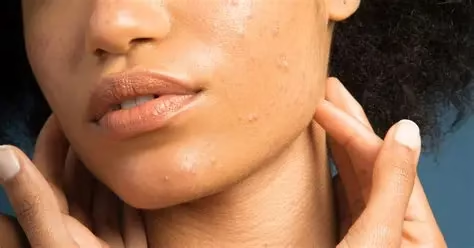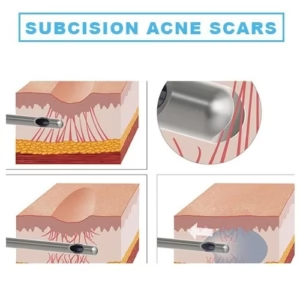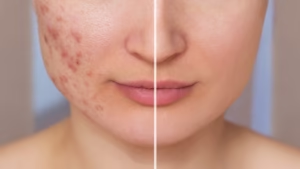
Related articles
Read more

Subcision is a proven treatment for scar reduction, especially acne scars. Learn how it works, its benefits, risks, and what results you can expect.
Subcision is a minimally invasive dermatological procedure designed to treat depressed scars, particularly acne scars. A fine needle is inserted under the skin to break the fibrotic strands tethering the scar tissue, allowing the skin to rise and appear smoother.
During subcision, the doctor uses a special needle (like a Nokor needle) to release the tension beneath the scar, stimulating natural collagen production. This not only lifts the scar but also helps the skin heal more evenly over time.
this treatment is often combined with other treatments like:
Microneedling
PRP (Platelet-Rich Plasma)
Dermal fillers

Subcision is most effective for:
Rolling scars (caused by acne)
Atrophic scars
Boxcar scars (in some cases)
Some surgical or injury-related scars
⚠️ Not suitable for raised (hypertrophic or keloid) scars.

Anesthesia: Local anesthetic is used to numb the area.
Procedure: A needle is inserted to break the scar’s fibrous bands.
Sensation: You may hear a “popping” sound—this is normal.
Time: Sessions usually take 30–60 minutes.
Recovery time: Mild swelling or bruising for 3–7 days.
Like any cosmetic procedure, it has some risks:
Temporary bruising
Swelling or tenderness
Hyperpigmentation (especially in darker skin tones)
Infection (rare if done professionally)
| Treatment | Invasiveness | Downtime | Suitable For |
|---|---|---|---|
| Subcision | Low | 3–7 days | Rolling/atrophic scars |
| Microneedling | Very low | 1–2 days | Superficial texture |
| Laser Resurfacing | Medium–high | 7–14 days | Deep or pigmented scars |
Q: How long does it take to see results?
A: Improvements are often noticeable within 2–4 weeks, with full results in 2–3 months.
Q: Is it permanent?
A: Yes, the scar release is permanent, though maintenance may be needed.
Q: Can it be combined with other treatments?
A: Absolutely. It’s often paired with PRP, lasers, or fillers.
it is a trusted, science-backed treatment for reducing scars that otherwise resist topical or superficial treatments. While not suitable for every scar type, it offers real, lasting results for the right candidates.
If you’re tired of living with scars, talk to a certified dermatologist today. The sooner you start, the better your results.